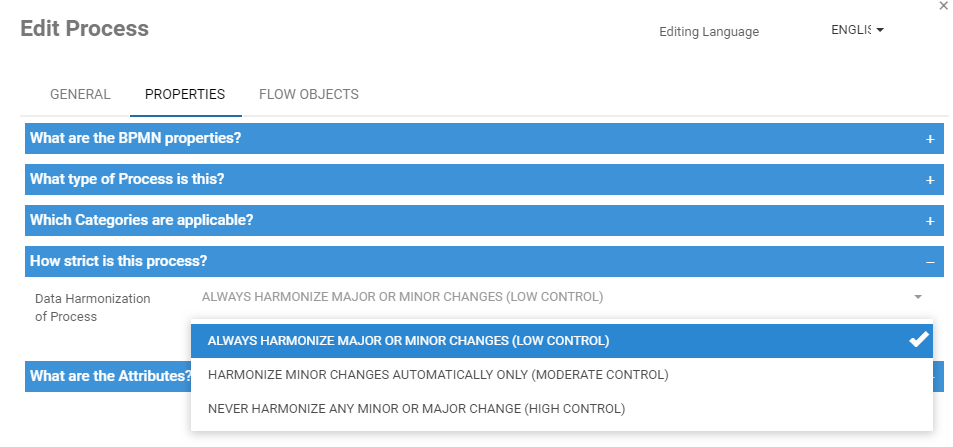Users can specify how much control the user has over an object’s associations. There are 3 degrees of control strictness to choose from:
- High (Never Harmonize Major and/or Minor Changes)
- Medium (Only Harmonize Minor Changes)
- Low (Always Harmonize Major and/or Minor Changes)
A strict object indicates that an object’s association versions is frozen upon a status change (sent for review -> approved -> published). Strict objects mean that when there is an approval or a publication, we are pointing the version of the object to the version of the associated object that was “approved” for use. We are “freezing” the process’ associated object’s versions.
High Control
When an object is designed as “High Control”, or “Never Harmonize Major and/or Minor Changes”, the user has a high degree of control over an object’s associations. Minor or Major publication of associated objects will never be synced automatically.
Medium Control
When an object is designated as “Medium Control” or “Only Harmonize Minor Changes”, major publication of associated objects will render the object as “Out of Synx”. Any minor publications will be automatically updated by EPC.
Low Control
This is the default setting for all objects. Major or minor publication of an object’s associations will always be automatically updated without notifying the user.
Setting the Control Level
To set processes’ control level, follow these steps
1. Edit a process
2. Under the Properties tab, find the section labelled How Strict is this Process? and set the desired control level

Need more help with this?
Visit the Support Portal


